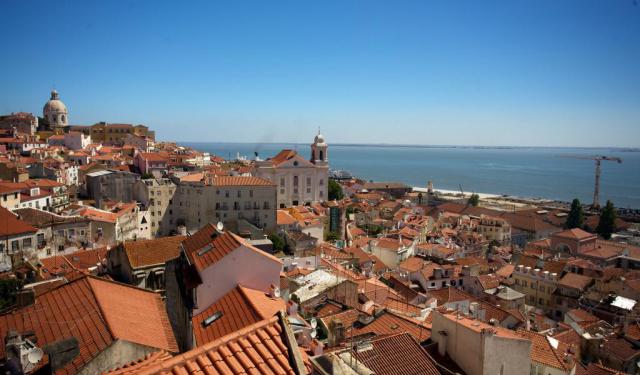Alfama
Alfama is an old, gentle, and humble fishing suburb in Lisbon.
this neighborhood holds the essence of the city. An area full of aromas and mixed emotions, where Fado the best-known genre of Portuguese music, very melancholic and often about the sea was created in the 1820s.
It is the oldest neighborhood in Lisbon, spreading downhill between the medieval former royal Castle of São Jorge and the Tagus river. Under Islamic rule, Alfama constituted the largest part of the city and was increasingly inhabited by fishermen and the poor. The reputation of being a poor area still lives on. The name Alfama derives from the Arabic al-ḥamma, which means "hot fountains" or "baths," akin to "hammam".
For that reason, Alfama has a most traditional distinct village atmosphere with narrow lanes of residential houses and grocery stores. Early morning is the best time to catch a more traditional scene.
Walk leisurely downhill through Alfama's steep, narrow, cobblestoned streets and catch a glimpse of the more traditional side of Lisbon.

Among the historic attractions found here there are numerous churches,
including the prominent Lisbon Cathedral (aka Santa Maria Maior), the oldest in
the city (dated 12th–14th cc); the Convent of the Grace (Convento da Graça,
18th century); the mannerist Monastery of São Vicente de Fora (late 16th–18th
century), where the Kings of the House of Braganza are buried; and the
baroque-style Santa Engrácia Church (17th century), presently converted into a
National Pantheon for important Portuguese personalities.
Lately, the neighborhood has been invigorated with
the renovation of the old, mixed-use houses which, among other residents, are
occupied by restaurants where Fado music is played. For those keen on this
typically Portuguese style of melancholy music, there is a dedicated Fado
Museum.
Complete with an abundance of cute little shops and
cafes, Alfama represents a lovely tourist destination, perfect for both a
historical quest and a night out with dinner. Whether you're culturally
motivated or simply looking for fun, take this self-guided walk to find the
gems awaiting you in the oldest part of the Portuguese capital






